Bringing a new region online is a mix of engineering, logistics, patience and a little bit of stubborn optimism. You don’t just rack servers and call it a day. You validate power paths, test routing, check for edge cases you only find at 2 AM, and then test again. After months of that kind of work, our Warsaw availability zone is live.
This zone sits in Poland’s capital inside LIM Data Center 3, one of the most interconnected facilities in the country. It also runs the same high-end hardware generation we deployed in New York, so customers landing in Warsaw get modern CPU architecture, DDR5 memory and fast PCIe 5.0 NVMe storage from their first boot. More on that in a bit.
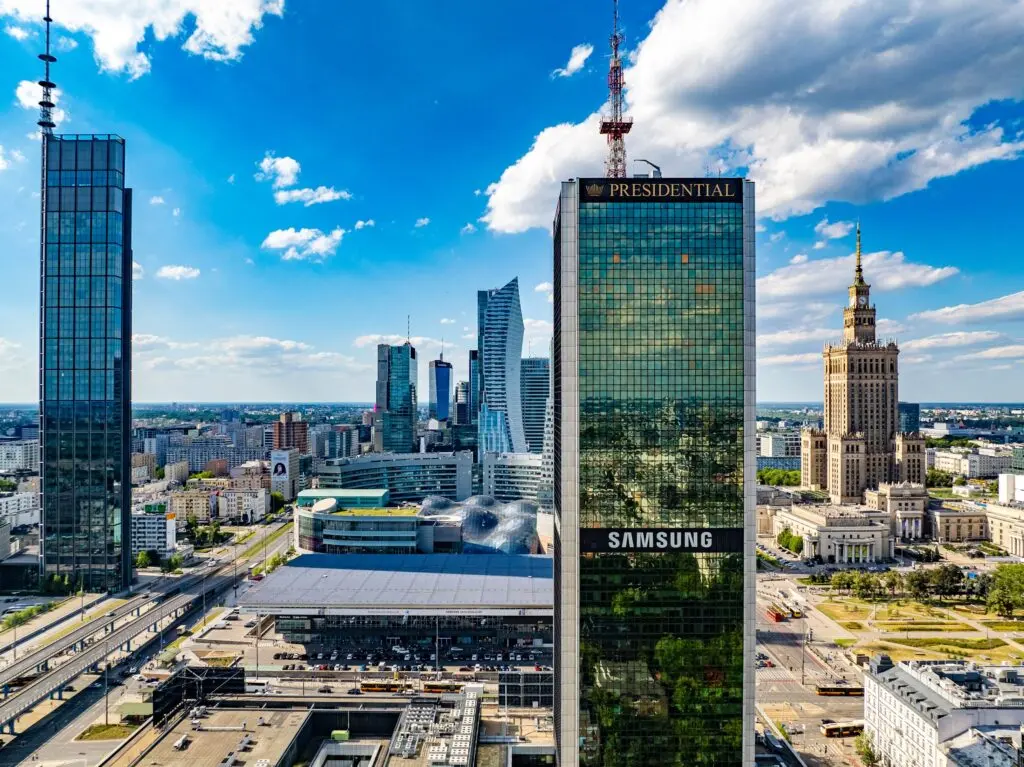
Warsaw becomes our eighth location after London, New York, Paris, Amsterdam, Frankfurt, Bucharest and Helsinki. Madrid is planned next before the end of 2025 with more locations already in the pipeline.
The idea is simple even if the execution rarely is: give developers and teams a growing set of regions that feel predictable, fast and reliable, wherever their users happen to be.
Why Poland? Why now?
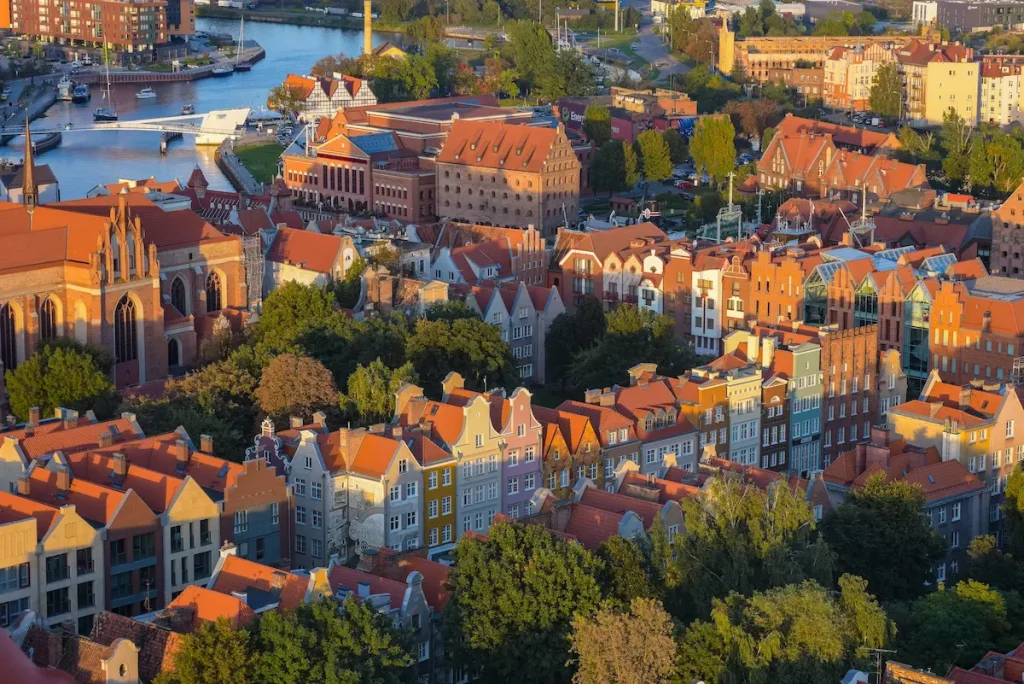
Pictured: City of Gdańsk, photo by Eduardo Casajús Gorostiaga
Poland has walked into a new phase of digital growth over the last few years. The data center market was valued around $1.16 billion in 2024 and is projected to reach roughly $2.78 billion by 2030 (Source). That’s a steep climb driven by real demand rather than hype.
Cloud adoption has accelerated just as sharply. Public cloud spending in Poland rose by about 41.5% year on year in 2023 which was the fastest growth rate in the EU at that time. Enterprises moved core systems into cloud environments, government services digitized aggressively and local software companies scaled faster with fewer barriers.

Pictured: City of Gdańsk, photo by Lucas Albuquerque
When markets move like that, infrastructure has to follow. Poland now ranks among the larger data center markets globally, sitting around 15th worldwide with about 136 data centers across the country and over 40 in Warsaw alone. That concentration makes the city a natural first stop for any provider wanting meaningful Polish coverage.
The VPS market tells a similar story. Estimates place Poland’s VPS and server market around $902 million in 2025 with annual growth above 8%. This isn’t a niche. It’s a busy field with serious users who care about latency, stability and long term pricing they can trust. That fits our audience pretty well.
Why Warsaw specifically
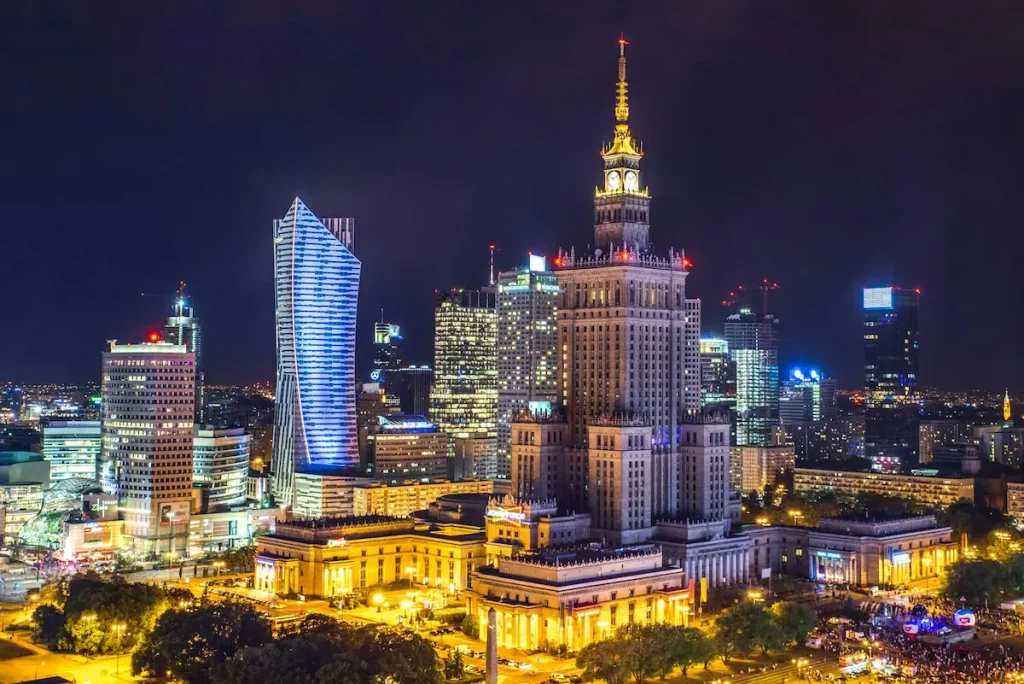
Warsaw is a strategic place to run infrastructure for the simple reason that traffic already moves through it. The city acts as a gateway between Western Europe and the eastern side of the continent. Routes heading toward Germany, the Nordics, the Baltics, the Balkans and parts of Eastern Europe regularly pass through Polish networks. (Source)
From a developer’s point of view, that positioning reduces unnecessary distance. Round-trip latency from Warsaw to Frankfurt lands around 30 ms on strong paths, and new fiber routes have improved links toward Amsterdam, Vienna, Prague, Bratislava, Budapest, Stockholm and Helsinki. That influences everything from API response times to how a multi-region architecture behaves during peak traffic.
There is also a human side to this. Poland has the largest tech workforce in Central and Eastern Europe with over 650,000 engineers and tech professionals. Warsaw alone counts roughly 103,000 developers, so close to a quarter of the country’s total.
Those numbers matter because they shape daily reality. When a city has that many people shipping software, running fintech platforms, building AI tools, scaling e-commerce and maintaining internal systems for large companies, infrastructure expectations rise quickly. Warsaw users want reliable compute in a place that feels local, not a distant fallback.
Add to that the broader business climate. Poland ranks high for English proficiency, around 13th globally in recent indices, and Warsaw hosts one of Europe’s largest concentrations of IT firms. Outsourcing, nearshore development and regional HQs from US and EU companies all feed demand for stable hosting close to where teams work.
The building behind the zone
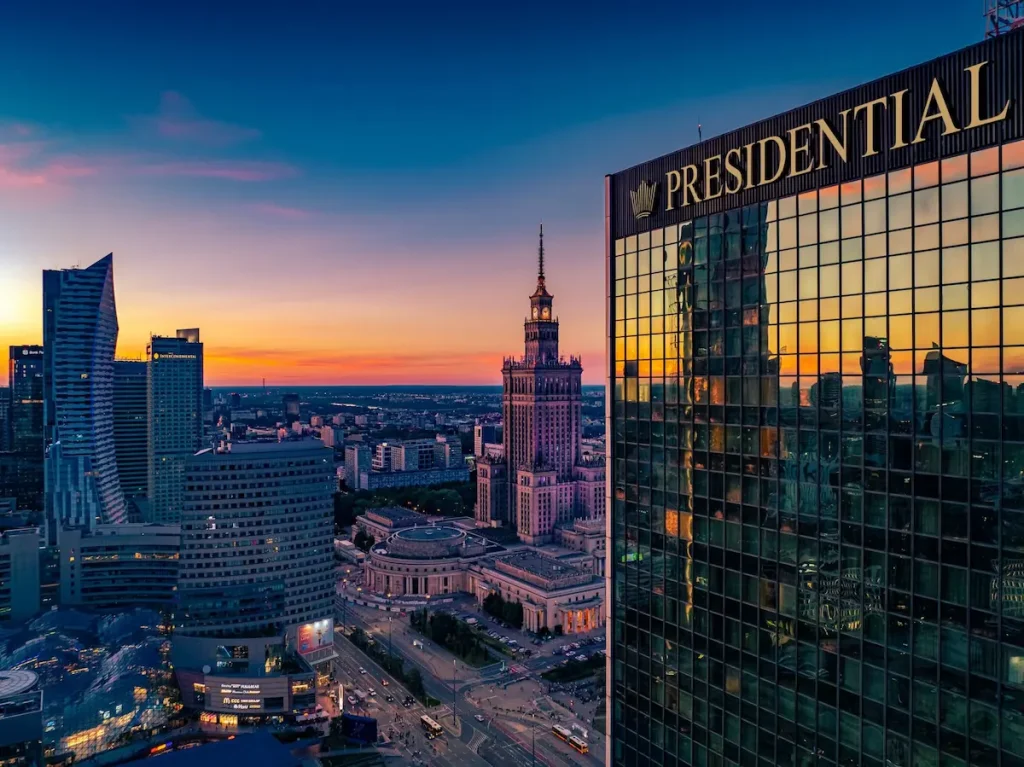
Warsaw has multiple strong facilities, so choosing the right one took a while. LIM Data Center stood out early and stayed at the top of the list through the whole evaluation.
LIM has been operating continuously for over 25 years and sits in a unique position on Warsaw’s telecom map. It is one of the key telecommunications hubs in Poland, hosting over 100 operators and cloud providers under one roof. That density is not abstract. It means the building contains a living mesh of carriers, peering partners and network options that shorten routes and reduce failure risk.
The LIM complex acts as a convergence point for 10 metropolitan networks and the tower itself has 6 independent telecom connections. About 12,000 fiber pairs from Polish national, local and international operators pass through LIM, which is why it’s often referenced as the country’s main carrier hub.
From a practical standpoint, that gives a VPS region immediate benefits such as diverse upstream paths, fast peering possibilities and fewer congestion events during busy hours.
Our footprint sits inside LIM Data Center 3. This part of the complex was built as a modern expansion phase and was designed for present-day density needs. LIM DC3 supports around 60 telecom racks in its first stage and was planned with room to expand by roughly 200 more racks later.
The tower also hosts technical areas on several floors including -2, +3, +13 and +42. On top of that, broadcasting systems can be installed at about 181 meters height with a mast of around 41 meters, which gives strong radio propagation conditions for tenants using the building for wireless infrastructure.
That mix of history and growth investment matters. LIM has been full or near full for years, and the facility’s leadership has repeatedly expanded to meet demand from telecom operators and international tenants. A building that attracts that kind of long term customer base tends to take reliability seriously.
Power and cooling, in real terms
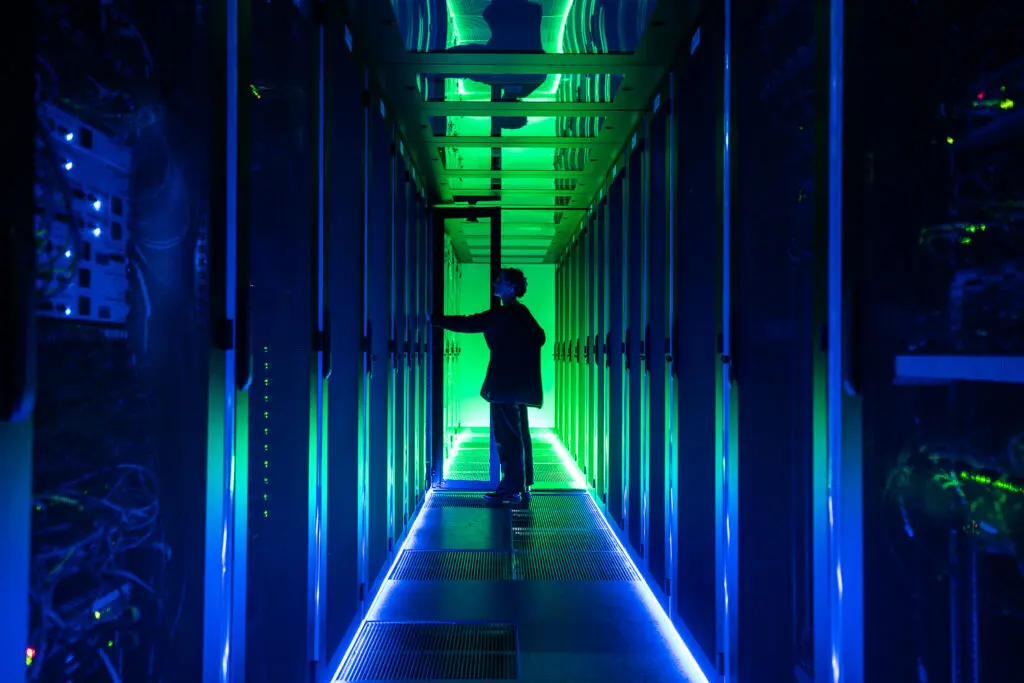
You sometimes see data center specs listed like decoration. In LIM’s case they describe a facility built for telecom stability.
Total power capacity across the property reaches around 6 MW with redundant supply connections. Within the DC3 area and adjacent technical spaces, power is delivered through dual paths labeled A and B. Redundant capacity for critical systems sits around 2.5 MW.
Emergency power protection is provided through UPS in a 2x (N+1) setup with two generators rated at 400 kW each.
Cooling is built around free cooling supported by precision air conditioning, using Mitsubishi cooling cabinets with dual power supply for HVAC. In a climate like Warsaw’s this matters over the course of a year. The city’s average temperature sits around 8.8°C, which allows free cooling to be used more frequently, reducing load on active cooling systems and supporting improved efficiency.
That is not just about energy cost. It reduces thermal swings and keeps component behavior predictable over time. Those are boring benefits right up until you experience a facility that doesn’t have them.
Facility security systems
LIM’s security stack is built to satisfy telecom operators who expect constant physical oversight.
The property is under video surveillance 24/7 with access control using an e-card system and centralized entry logs. Motion detection is part of the monitoring setup.
Fire protection uses VESDA early detection coupled with INERGEN gas suppression. That combination is widely used in high-density technical spaces because it reacts early and suppresses without damaging equipment.
Infrastructure monitoring runs continuously through BMS automation and on-site security teams.
All of this aligns with LIM operating under national and EU regulations for secure data processing. It also matches our own standard for choosing facilities across Europe.
The hardware line in Warsaw
Warsaw runs the same high-end generation we brought online in New York. The goal with this hardware line was to deploy a platform that feels modern over long product cycles, not just on launch week.
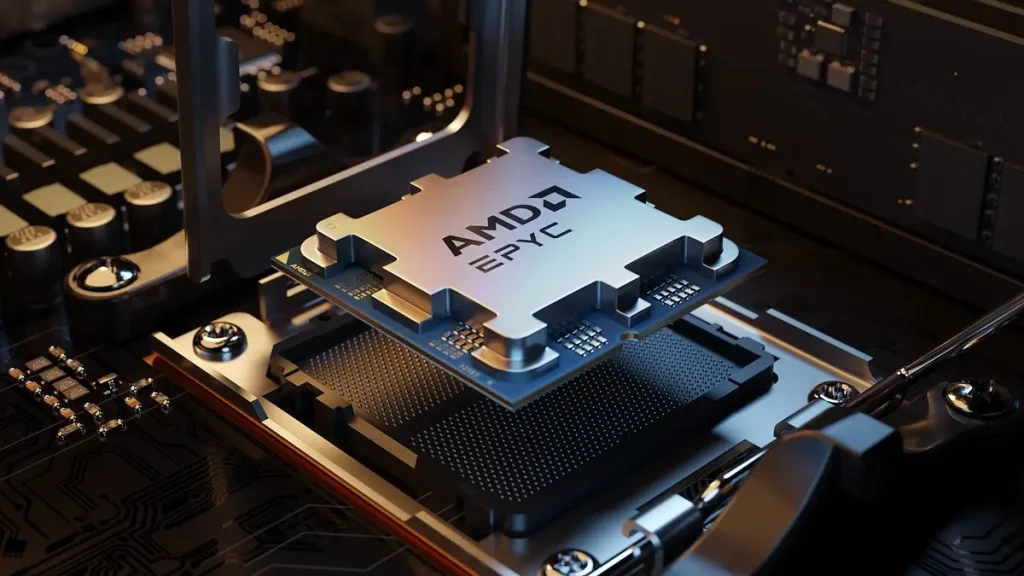
Every virtual server in Warsaw is built on:
- AMD EPYC 9354 processors from the Genoa family built on Zen 4 architecture
- DDR5 memory
- NVMe storage on PCIe 5.0
- KVM virtualization
- AMD Infinity Guard security features such as SEV, SEV-ES and SEV-SNP
- Unmetered bandwidth
Genoa EPYC CPUs bring clear improvements in core density, memory bandwidth and virtualization performance over older architectures. Zen 4 handles concurrent threads with lower overhead, which keeps services responsive during traffic spikes. It’s also a big deal for teams running multi-tenant systems, busy CI pipelines or heavily threaded data services.
DDR5 memory is another meaningful change in daily use. Higher bandwidth per channel helps in places where memory pressure matters, such as data stores, caching layers, analytics services and admin dashboards that rely on frequent reads and writes. Users often describe this upgrade as “everything feels a bit smoother” which is accurate enough.
NVMe on PCIe 5.0 gives storage throughput that approaches double what older PCIe 4.0 systems typically sustain in similar conditions. That improves boot times, reduces cold start delays, speeds up backup windows and keeps databases stable during high I/O periods. For anyone who has watched a restore crawl on outdated storage, the difference is immediate.
Infinity Guard provides hardware backed encryption on a per-VM basis. SEV isolates memory. SEV-ES encrypts CPU register state. SEV-SNP adds strong protections against a wider range of memory integrity risks. It’s a “quiet upgrade” in the best sense. You benefit without needing to change your workflow.
What this region supports well
Warsaw doesn’t exist to tick a box on a map. It’s meant to be useful in real deployments.
Latency-sensitive apps are an obvious fit. Things like real-time dashboards, interactive APIs, trading tools and platforms serving users across Central and Eastern Europe gain from stable routes and shorter travel distance.
Data heavy services also benefit here. Database backends, search layers, log pipelines, monitoring systems and analytics engines typically depend on consistent I/O behavior. PCIe 5.0 NVMe combined with DDR5 makes that consistency easier to deliver.
Production apps running on container stacks or standard Linux environments also land well. Zen 4 performance under concurrency helps microservice clusters and automation systems that scale horizontally.
There is a practical benefit for teams who want an EU location that remains inside clear GDPR jurisdiction while still being close to users further east. Poland follows GDPR directly as an EU member state and also runs a local Personal Data Protection Act that aligns national processing rules with EU standards.
For companies that care about data residency, running inside Poland satisfies “inside EU borders” requirements while giving a regional option closer to Eastern Europe than many western facilities.
Poland’s broader infrastructure momentum
Warsaw is a strong city on its own, but the larger national trend is what makes this region a long term bet.
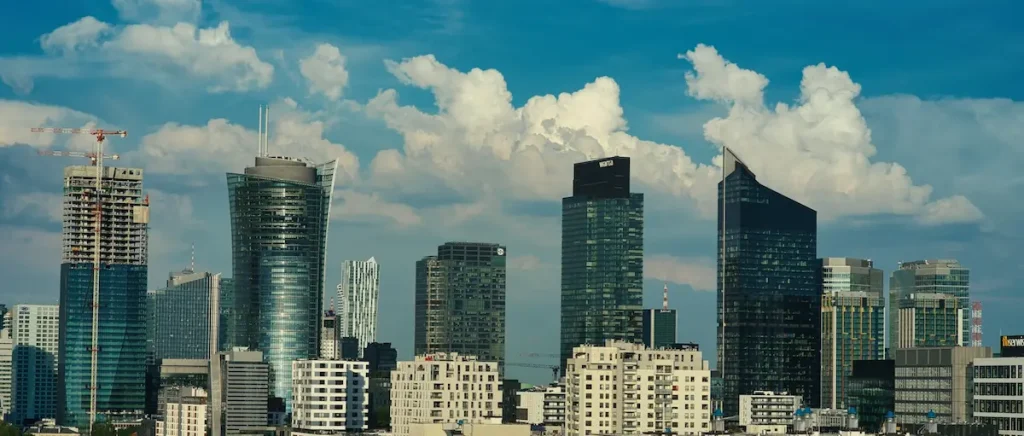
Poland’s cloud market is projected to grow from about $3.12 billion in 2025 to around $8.41 billion by 2030. Digital transformation spending across the economy is expected to reach roughly $144.94 billion by 2030 with an annual growth rate above 11%. (Source)
Internet penetration supports that growth. Household internet access reached about 95.9% in 2024 and overall population penetration is estimated around 89.13% in 2025. Fixed broadband adoption is strong with median speeds reported around 152 Mbps and fiber representing over half of fixed connections.
E-commerce is another driver. Online retail sits close to 8.8% of total retail sales in Poland, with 2024 volume around PLN 701.1 billion or about $178.21 billion and growth continuing year on year.
These changes translate into more hosting demand locally. E-commerce operators need stable compute near customers. Payment systems need predictable latency. Growing SaaS platforms want local staging and production clusters. Developers want cheap test environments that don’t bottleneck.
Hyperscaler investment as a signal
Warsaw has also been validated by major cloud players. Microsoft invested over $1 billion into Warsaw area infrastructure, training and cloud services. Google committed around $2 billion and brought its cloud region live in 2021 with continued scaling afterward.
These investments don’t guarantee success for everyone, but they show that the city and national grid are ready for serious infrastructure growth. International operators don’t spend a billion dollars on a whim.
This momentum has also drawn global data center operators into the market. Equinix, Digital Realty and other hyperscale builders expanded in and around Warsaw. Their presence increases carrier density and improves routing options across the city. That is good news for any regional VPS platform trying to keep latency stable.
Green energy and climate advantages
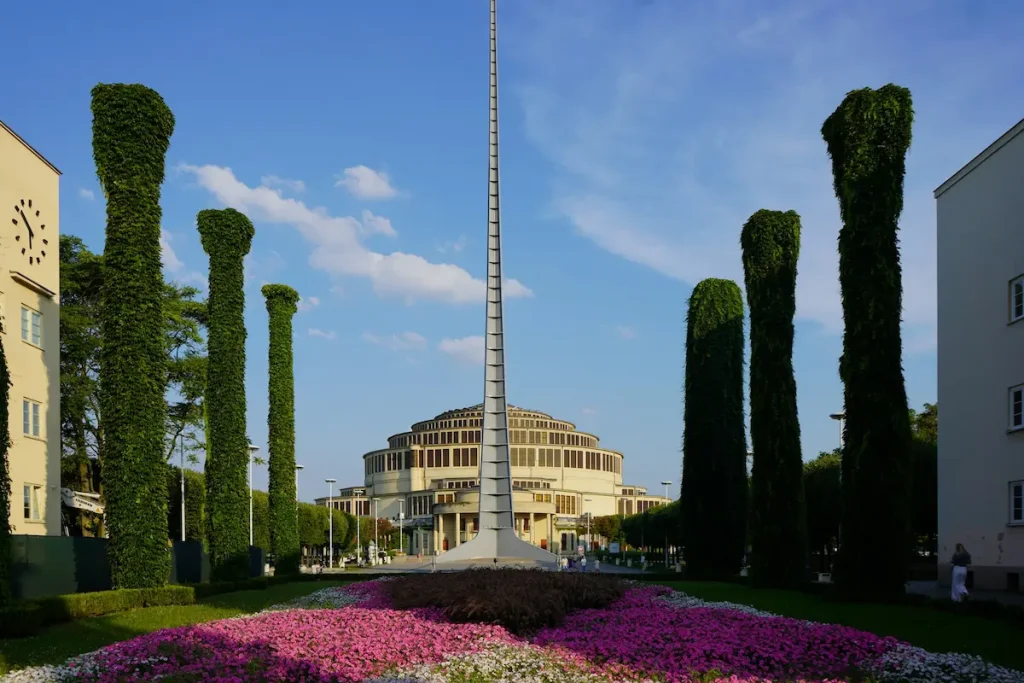
Pictured: City of Wrocław, photo by Tadeusz Zachwieja
Poland is not a Nordic country, but it has one of the lowest annual average ambient temperatures in Europe outside the Nordics. Warsaw’s cooler profile helps facilities rely on free cooling for more of the year.
On the energy side Poland is pushing toward a lower carbon mix. Targets include about 50% lower CO2 emissions versus 2023 by 2030 and a transition toward roughly 72% green energy in the national mix. Offshore wind in the Baltic Sea has a theoretical potential around 33 GW with staged build plans through 2040.
The national grid operator PSE allocated around 1,200 MW of data center development capacity by 2034. Poland also has the second largest district heating network in Europe, which opens the door for heat reuse from data centers at city scale.
These are long term factors, not quick wins. Still, they matter for choosing regions that will be sustainable and power stable over the next decade.
Cost structure and competitiveness
Poland’s pricing environment supports growth without compromising quality. Construction costs, power costs and labor costs are lower than many western capitals while the talent and carrier density remain strong. That combination enables operators to build modern facilities efficiently and still maintain high standards.
For developers and businesses this tends to translate into reliable services at prices that don’t carry the same premium you often see further west. Warsaw itself ranks around 12th in European pay scales while hosting one of the continent’s largest IT clusters.
Good cost fundamentals also attract more operators, which in turn increases carrier competition and routing diversity. That is a useful feedback loop for a region launch.
Startup and innovation energy
Poland’s startup environment has matured quickly. According to Startup Guide Europe, In 2024 roughly 142 Polish startups raised close to €500 million in funding. Warsaw alone attracted around $161 million in early stage investment between mid-2022 and 2024.
The current Warsaw startup ecosystem valuation is estimated around $3.2 billion with exits passing $1 billion between 2020 and 2024. The city hosts about 360 startups and maintains several active incubators and event spaces.
What this means for hosting is simple. Startup teams often need fast provisioning, stable performance and predictable cost. Warsaw now gives them a local region that fits those needs.
A few Warsaw details worth celebrating
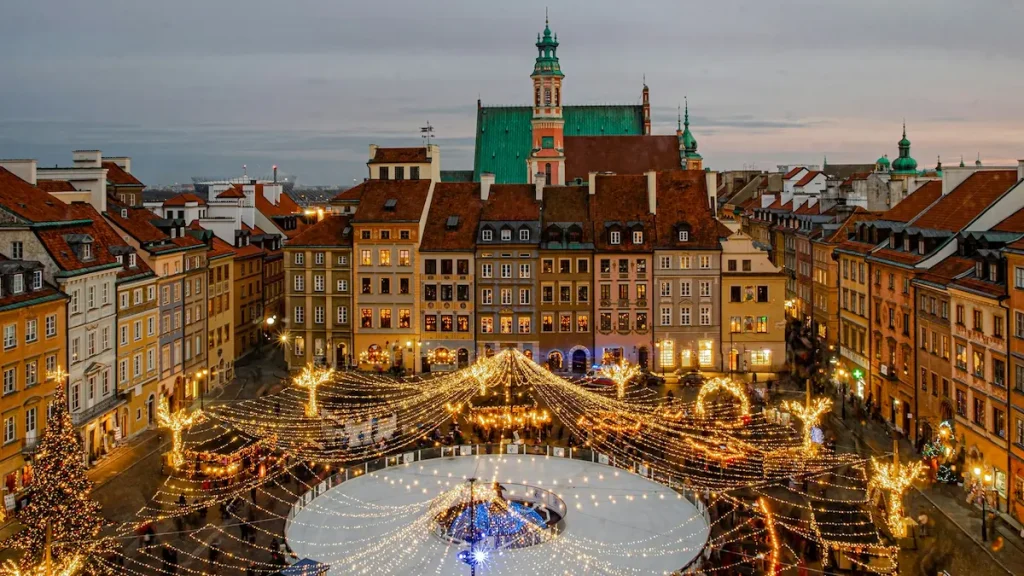
Even when you keep a launch focused on infrastructure, it’s hard not to acknowledge the city itself.
Warsaw is about 700 years old and has been Poland’s capital for roughly 400 years. The Old Town was destroyed in WWII, rebuilt meticulously and later recognized as a UNESCO World Heritage Site in 1980. The city is sometimes called the Phoenix City because of that reconstruction story. (Source)
Warsaw is also one of Europe’s greenest capitals. Within city limits there are 12 nature reserves, 27 forests and multiple river beaches. Parks occupy around a quarter of the total city area.
It has major cultural landmarks such as the Royal Castle, Wilanów Palace and the Palace of Culture and Science, a 140-meter tower that still defines the skyline. Museums like POLIN, the Warsaw Rising Museum and the Copernicus Science Centre pull some of the largest visitor numbers in the country.
These aren’t random tourism facts. A city that invests in rebuilding, infrastructure and education over centuries tends to produce the kind of resilience you want behind a network region.
How this fits LumaDock’s platform
Warsaw integrates into the platform exactly like our other regions. Customers can deploy virtual machines with full root access, KVM isolation and the same features they already rely on elsewhere.
That includes firewall management, always-on DDoS protection, private networking, snapshots, backup tooling, dedicated IPv4 + IPv6 and fast provisioning. Our control panel and API behave the same way across locations, which makes multi-region operations simpler to manage.
Hardware design is unified across our infrastructure, meaning our regions share compatible server platforms and network components. That consistency helps in performance tuning and makes scaling across zones more predictable.
On compliance and privacy, all EU regions including Warsaw run under GDPR rules. We do not collect data on what customers run inside their virtual servers. We handle the physical infrastructure and networking layer. Customers control their applications, data and server environment.
What comes next
Warsaw is part of a larger expansion plan that keeps stepping outward from Europe into new high demand markets. Madrid is already lined up for later in 2025. After that, more regions follow. The goal is to continue building a platform where new zones arrive with modern hardware, stable carrier setups and a facility standard that doesn’t compromise on long term reliability.
There is also a clear intent behind choosing cities like Warsaw. We want regions placed where the local tech scene is active, where network paths are strong and where infrastructure investment is still growing quickly. Poland checks those boxes today and likely will for years.
My final thoughts…
Warsaw is now live on LumaDock. It brings a central European region into the platform with one of Poland’s strongest carrier hubs beneath it and our newest high-end hardware on top of it.
For teams serving users across Central and Eastern Europe, for companies that need EU data residency, for developers who want modern compute near a fast growing market, this region is ready.
If you deploy here, you are landing in a city with deep telecom roots, a serious engineering community and a digital market still climbing hard. We’re proud to be part of that climb.

